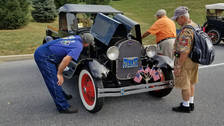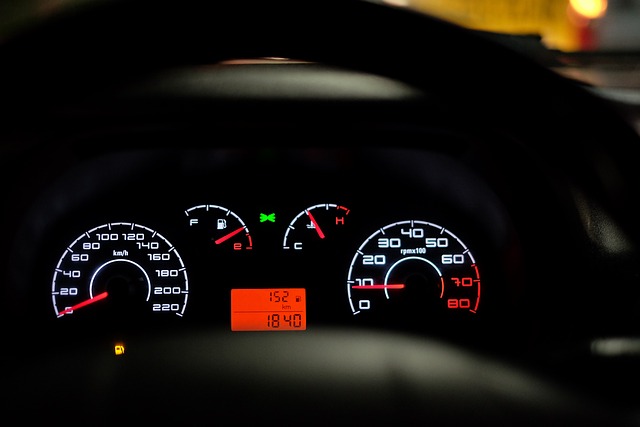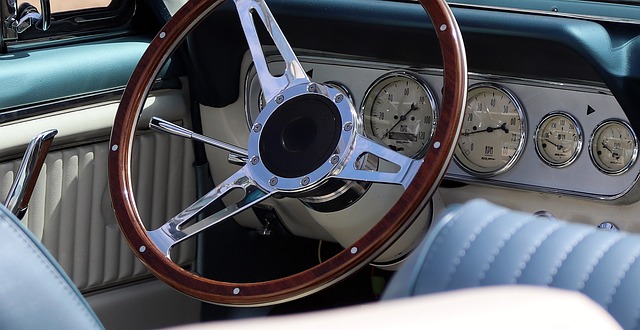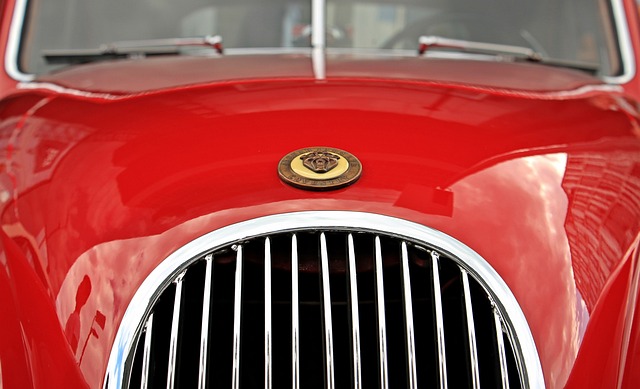What January 2019’s big-ticket collector car auctions say about the state from the market
For once, the takeaway in the January 2019 collector car auctions isn’t about record-setting totals. In reality, equally we had in Monterey last August, the preliminary originates from the couple of Arizona auctions (reported by Hagerty) show totals down from 2019 — in such cases, to $247.8 million from $259.8 million. Meanwhile, Mecum’s Kissimmee, Florida, sale, which developed just outside Orlando earlier this month, saw a short total of $96.6 million in sales, slightly aloof from its eagerly sought $100 million target nevertheless a huge $10 million boost over 2019’s figures.
Nor was the narrative about records smashed by those seven-figure (or eight-figure) cars most people could only dream of owning. There are ample those, obviously, together with plenty of high six-figure cars that remain fantasy garage material. (Heck, low, medium as well as five-figure cars are typically in exactly the same unattainable territory for many people presently.)
The big story, though, was the reduced and middle ends on the market flexing their wallets and/or credit while the upper crust took a measured take a step back.
In some respects, that was the continuation associated with a trend. We’ve seen a decreasing appetite for really pricey cars for a long time now, unless they are exceptionally rare examples and/or have a unique history and impeccable provenance — cars that adheres to that will always find eager buyers, as Preston Tucker’s personal Tucker 48 sedan (sold by RM Sotheby’s for $1,792,500) demonstrates. Other premium cars rolled round the block without meeting their reserve, which bit mightily to the overall sales figures.
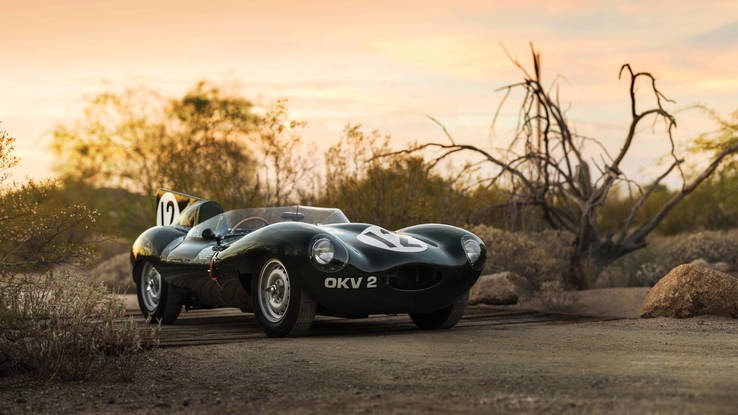
This 1954 Jaguar D-Type supplied by RM Sotheby's, including a 1956 illustration of the breed offered by Gooding & Co., failed to sell in Arizona this January. Photo by Patrick Ernzen thanks to RM Sotheby’s
Is the so-called smart money edging clear of a super-heated market? Perhaps, but there’s another angle to contemplate: The recently passed Us tax code overhaul. Specifically, the brand new law limits so-called 1031 exchanges, which allows individuals selling certain assets to reinvest hails from the sale into similar assets without taxes for the sale.
You’ll always be able to do that with property, including, however, not art or classic cars. When you sell your Duesenberg to acquire a Bizzarrini — and intensely, who amongst us hasn’t been through it — you’ll pay tax for the profit realized for the Duesenberg first. In the event you really want to go into something more challenging and also have the cash to invest, the newest rules won’t stop you. However if you treat classic cars like investments instead of cool, fun circumstances to enjoy, you may think twice.
It is unclear how big is an impact this would enhance the top of end within the market, but when January’s email address details are any suggestion, perhaps it is awhile before we see another astonishing string of record-setting car sale prices. Sales working on higher-end vehicles, such as the Amelia Island auction along with the Monterey Car Week auctions, should give more insight. And, however, this won’t do much to keep international investment-minded buyers from the field.
Meanwhile, the majority of the market — perhaps buoyed through the stock market’s prolonged winning streak, generally positive domestic economic indicators including a business-friendly regulatory environment — is buying with gusto. That’s ultimately what kept January’s sales healthy.
Classic Cars
Why I am not concerned about the way forward for collector cars
Consider, for just a moment, a doomsday scenario: At the stroke of midnight on Jan. 1, everyone significantly older than, say, 65 or 70 swears off gasoline and unloads their collector cars. Arizona and Kissimmee …
To illustrate this diverging market, glance at the top-10 sales from Arizona (per Hagerty):
1. 1965 Ferrari 275 GTB Speciale Coupe sold for $8,085,000 (Gooding & Co.)
2. 1958 Porsche 550A Spyder sold for $5,170,000 (Bonhams)
3. 1954 Ferrari 500 Mondial Spider sold for $4,455,000 (Gooding & Co.)
4. 1931 Bugatti Type 55 Roadster sold for $4,070,000 (Gooding & Co.)
5. 1966 Shelby Cobra 427 S/C Roadster sold for $2,947,500 (RM Sotheby's)
6. 1972 Ferrari 365 GTS/4 Daytona Spider sold for $2,640,000 (Bonhams)
7. 1967 Ferrari 330 GTS Spider sold for $2,530,000 (Gooding & Co.)
8. 2019 Ford GT Coupe sold for $2,500,000 (Barrett-Jackson)*
9. 2014 Pagani Huayra Coupe sold for $2,090,000 (Gooding & Co.)
10. 1948 Tucker 48 Sedan sold for $1,792,500 (RM Sotheby's)
Mecum’s Kissimmee top-seller was a 2015 LaFerrari, which went to get a whopping $3,410,000; none of the company’s other big sales may have cracked that list.
Note which the car for the very bottom of last year’s Arizona best was obviously a ’31 Alfa Romeo 6C 1750 Gran Sport Spider, which went for $2,805,000 — the whole million above the Tucker at the bottom of this year’s list. Maybe some volume of megabucks lots were simply not offered in Arizona this holiday season; they may be sold at other events, or sellers might stop talking consigning them in the face of a softening market. Of those people who were offered, quite a few, being a set of Jaguar D-Types which is available from Gooding and RM Sotheby’s, failed to meet reserve prices.
Despite this, the typical sale price in Arizona was actually up in comparison to recently — $92,887 to $89,601. That the number is increasing, particularly in 12 months once the big-ticket cars were notably less big than we’ve witnessed in years prior, only reinforces the concept that it’s the low- and middle-priced cars driving industry.

RM Sotheby's sold this 1948 Tucker 48 for $1,792,500. Just like the Ferrari above, fantastic link with history — it was actually Preston Tucker's personal car. Photo by Darin Schnabel from RM Sotheby’s
We’re not suggesting that this typical enthusiast can spend nearly $100,000 over a car; that’s not necessarily the fact. But realize that has a tendency to numbers are average, not median, prices; they’re dragged up with the high six-figure and seven-figure offerings. Trucks and cars in, say, the $40,000-$75,000 range keep see strong interest. That’s out of your impulse-buy zone for your vast majority of us, but it’s within “lifetime attainment” territory for any sizable slice of the collector car hobby — particularly if financing at prerecession terms is, for better and for worse, readily accessible again. (There are numerous deals under $10,000 available at all the big auctions, too, but that’s another story for the next day.)
We also ought to see this inside Mecum results; the best overall number only tells a part of the story. With 2,208 vehicles of three,023 moved, your home achieved a 73 percent sell-through rate. As a result of volume of lots sold with a reserve, that’s very respectable for your company. Clearly, persons are still buying — but they’re not buying those cars for the tip-top of your market. Most of Mecum’s showstopper lots, such as Dick Landy ’65 Dodge Hemi Coronet A/FX in the Nick Smith factory lightweights collection, neglected to find takers. A vehicle that adheres to that could become the centerpiece of any collection; whether tax law changes caused certain buyers to balk, or whether dragsters piloted by mid-1960s racing personalities are unable to resonate with younger collectors, remains to be seen.
If there’s any lesson within this, it’s that individuals person who thought the dizziness-inducing, record-setting prices for high-end cars couldn’t last forever, you’re partially right. The bubble, if indeed its one, hasn’t popped, nonetheless the car at issue should be very special indeed to convince a customer to pony up big money these days.
But folks holding your breath for your broader market collapse, no dice. There's still an army of enthusiasts to choose from by having an appetite for moderately priced vintage sheetmetal, and they're driving sales of everything from 1950s cruisers to 1980s sports cars — most situations on four wheels, trucks and late-model exotics included. And not looking to time the market or letting yourself get intimidated by big numbers in headlines, determine what you like, chase over the height within your budget and enjoy with it.


